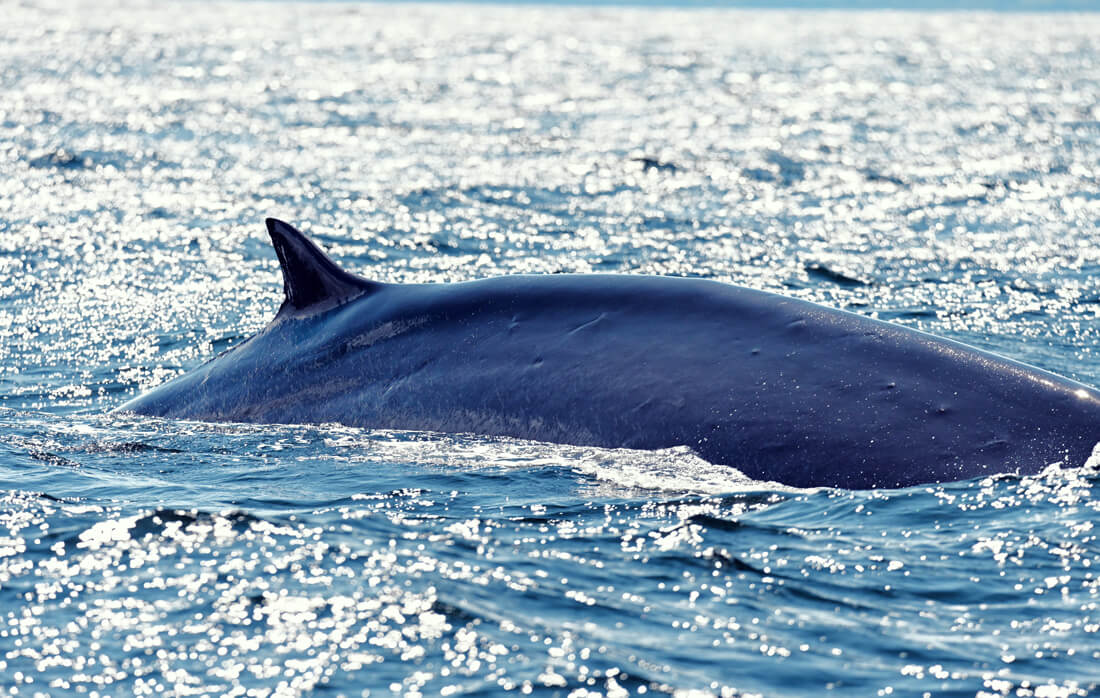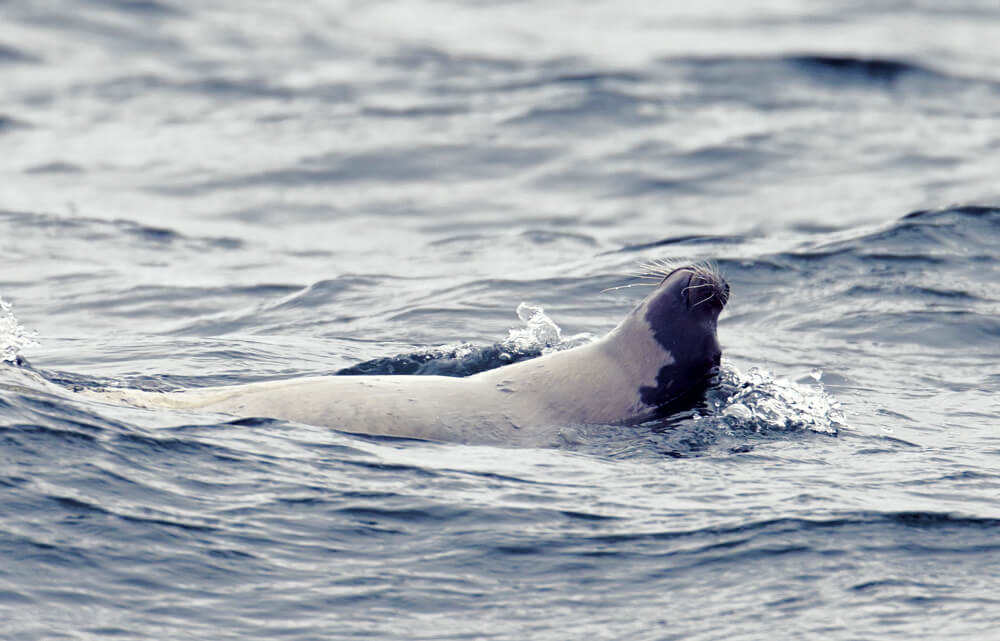This week, marine mammals were not deterred by the snow and wind from parading up and down the St. Lawrence. Under the watchful eyes of several daring observers, fin whales, belugas and harbour porpoises caused excitement and wonder. It just goes to show that sometimes one must be prepared to brave the elements in order to be rewarded with exciting observations!
Dynamic rorquals
Last week, a group of 5 or 6 fin whales was blowing off Franquelin. “We got a great look at their big backs,” explains one cetacean enthusiast who was present, “they don’t call them the greyhound of the seas for nothing! Indeed, this is one of the nicknames given to these giants. One of the fastest of all cetaceans, the fin whale has a cruise velocity of 10 to 15 km/h, but can “max out” at 40 km/h. The species relies on its powerful muscles to propel its caudal fin up and down, creating an efficient swimming machine. Its hydrodynamic morphology, which reduces the friction of water on its body, also allows it to reach high speeds.
On May 15, the spout of a humpback whale blurs the horizon. Unlike fin whales with their slim, streamlined body, humpbacks are not built for speed. They have rough skin, protuberances and a curvy, stocky profile.
A solitary fin whale was also seen in the Saguenay-St. Lawrence Marine Park on several occasions. A team from the Group for Research and Education on Marine Mammals (GREMM), which was back on the water in preparation for the summer season, was even able to identify the individual. It was Bp920, an individual that has been regularly observed in the estuary since 2006.
Belugas, curious behaviour and marine life
At the ferry terminal in Les Escoumins, a group of about eight belugas was spotted moving westbound. A careful observer shares what she observed: “A group of five or six individuals in front and two others trailing behind, one of which showed its tail fin when it dove. Belugas have been regularly swimming up the Saguenay Fjord and are spotted from Tadoussac or by ferry passengers. In Saint-Irénée, one resident has the chance to observe these white whales several times a week. Over time, it’s almost as if she’s developed a sixth sense for knowing when they might show up. “I know the tides and when the sea is calm, I know where they are and where to look.”
Harbour seals were present last weekend in Pointe-des-Monts. A minke whale made a discreet appearance near the Mingan Islands, while in Blanc-Sablon, a group of about four whales was stirring near the last traces of ice in the bay. Far from shore, one observer wondered about their ID, but the individuals were too distant to capture images that might be useful for determining the species. Their behaviour was also intriguing, as the individuals crossed paths with one another as if they were hunting or playing.
Out in Gaspésie, marine life is in full swing. “Grey seals at Pointe Saint-Pierre,” reports one diligent observer, “there were about ten of them and they were feasting on striped bass! Also, during another outing I saw harbour seals at the same place and this time they were playing in pairs. In Gaspé Bay in Forillon National Park, there were also humpback whales as well as minke whales near Pointe Saint-Georges. In the Saguenay-St. Lawrence Marine Park, it was possible to see two minke whales, several belugas and a few sizable herds of harp seals. Several porpoises showed the tips of their dorsals off Cap de Bon-Désir in Les Bergeronnes, not to mention a lone harbour seal.










